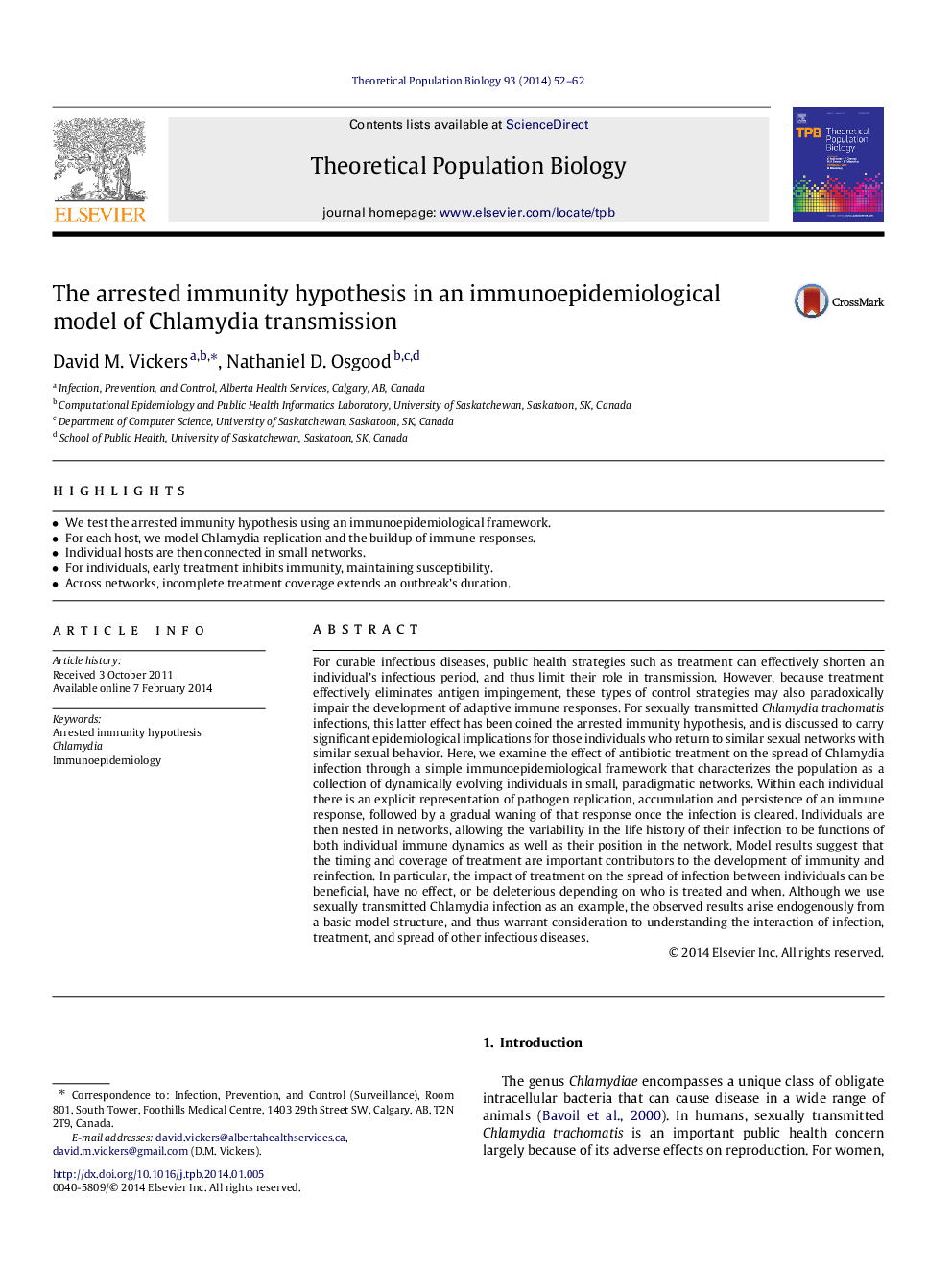| Article ID | Journal | Published Year | Pages | File Type |
|---|---|---|---|---|
| 4502342 | Theoretical Population Biology | 2014 | 11 Pages |
•We test the arrested immunity hypothesis using an immunoepidemiological framework.•For each host, we model Chlamydia replication and the buildup of immune responses.•Individual hosts are then connected in small networks.•For individuals, early treatment inhibits immunity, maintaining susceptibility.•Across networks, incomplete treatment coverage extends an outbreak’s duration.
For curable infectious diseases, public health strategies such as treatment can effectively shorten an individual’s infectious period, and thus limit their role in transmission. However, because treatment effectively eliminates antigen impingement, these types of control strategies may also paradoxically impair the development of adaptive immune responses. For sexually transmitted Chlamydia trachomatis infections, this latter effect has been coined the arrested immunity hypothesis, and is discussed to carry significant epidemiological implications for those individuals who return to similar sexual networks with similar sexual behavior. Here, we examine the effect of antibiotic treatment on the spread of Chlamydia infection through a simple immunoepidemiological framework that characterizes the population as a collection of dynamically evolving individuals in small, paradigmatic networks. Within each individual there is an explicit representation of pathogen replication, accumulation and persistence of an immune response, followed by a gradual waning of that response once the infection is cleared. Individuals are then nested in networks, allowing the variability in the life history of their infection to be functions of both individual immune dynamics as well as their position in the network. Model results suggest that the timing and coverage of treatment are important contributors to the development of immunity and reinfection. In particular, the impact of treatment on the spread of infection between individuals can be beneficial, have no effect, or be deleterious depending on who is treated and when. Although we use sexually transmitted Chlamydia infection as an example, the observed results arise endogenously from a basic model structure, and thus warrant consideration to understanding the interaction of infection, treatment, and spread of other infectious diseases.
